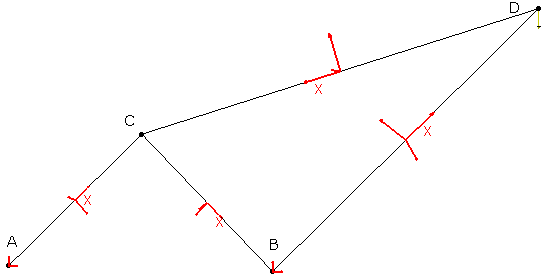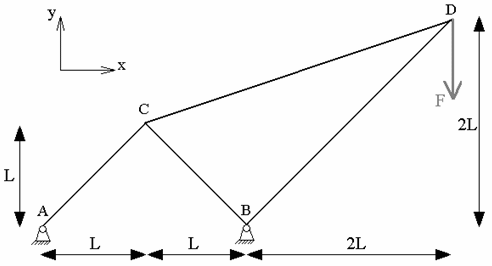This test lets you check the validity of the bar element, and retrieve displacements of an articulated truss in the plane.
Reference:
AFNOR technique, SFM Paris, Guide de validation des progiciels de calcul de structures, SSLL 11/89, p40, 1990
 Specifications
Specifications
Geometry Specifications
| L = 0.5 m |
|
|
Section (m2): |
Analysis Specifications
| Young Modulus (material): E = 1.962 x 1011 Pa |
 |
| Poisson's Ratio (material): ν = 0.3 |
|
|
Mesh Specifications: |
|
| Restraints (User-defined): On A and B (translation 1 and 2) |
|
| Loads (Distributed force): On D: Fy = -9.81 x 103 N |
 Results
Results
The table below presents the analysis results:
|
Points |
Displacements [m] |
Reference values |
Computed values |
Normalized results |
|
C |
uC |
0.26517 x 10-3 |
0.26517 x 10-3 |
1 |
|
vC |
0.08839 x 10-3 |
0.08839 x 10-3 |
1 |
|
|
D |
uD |
3.47902 x 10-3 |
3.47903 x 10-3 |
1.000003 |
|
vD |
-5.60084 x 10-3 |
-5.60035 x 10-3 |
0.999913 |
To Perform the Test:
The articulated_truss.CATAnalysis document presents a complete analysis of this case, computed with a mesh formed of beam elements.
To compute the case, proceed as follow:
-
Open the CATAnalysis document.
-
Compute the case in the Generative Structural Analysis workbench.
-
Create local sensors (Displacements vectors).
